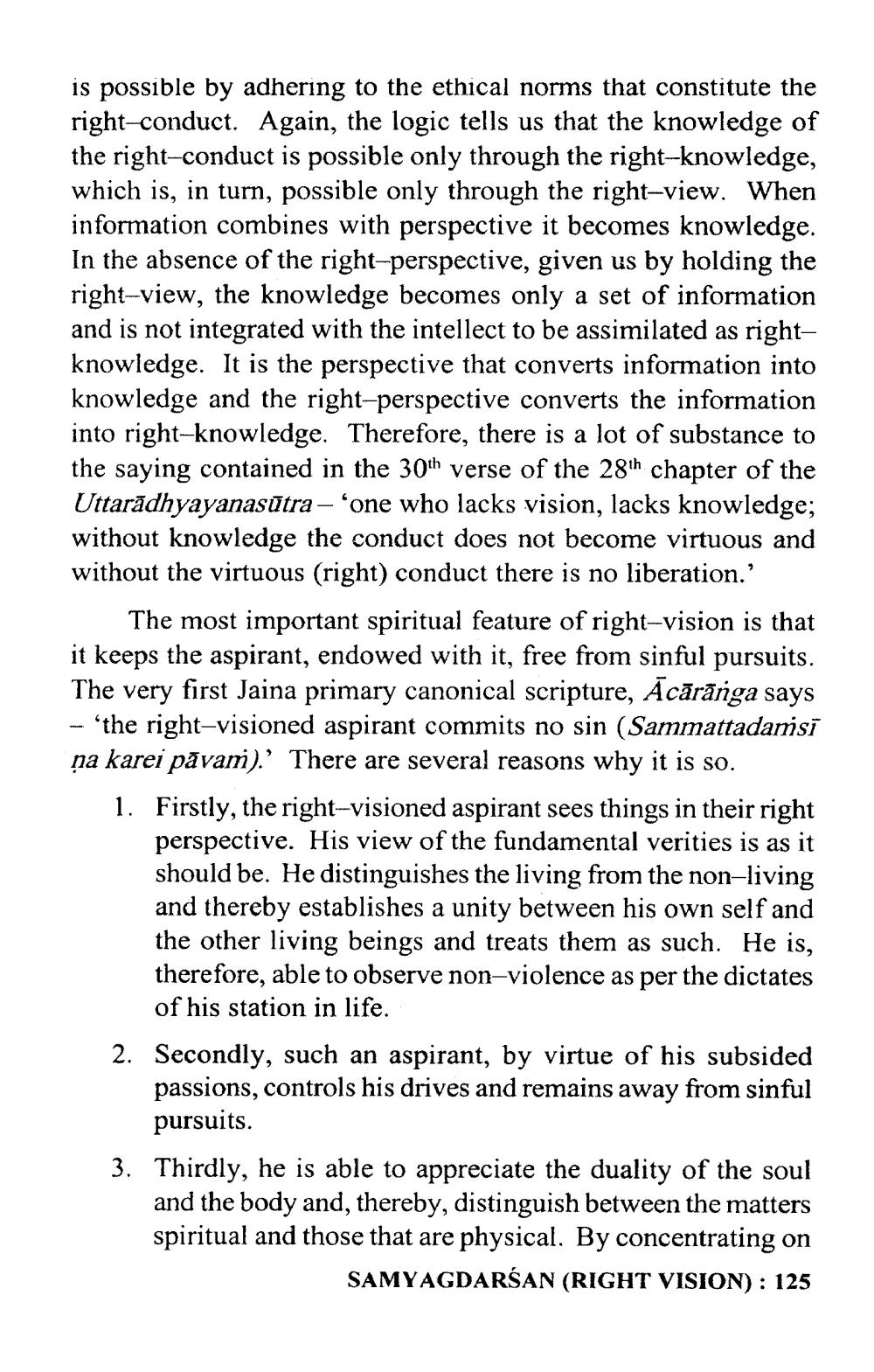________________
is possible by adhering to the ethical norms that constitute the right-conduct. Again, the logic tells us that the knowledge of the right-conduct is possible only through the right-knowledge, which is, in turn, possible only through the right-view. When information combines with perspective it becomes knowledge. In the absence of the right-perspective, given us by holding the right-view, the knowledge becomes only a set of information and is not integrated with the intellect to be assimilated as rightknowledge. It is the perspective that converts information into knowledge and the right-perspective converts the information into right-knowledge. Therefore, there is a lot of substance to the saying contained in the 30th verse of the 28th chapter of the Uttarādhyayanasūtra– ‘one who lacks vision, lacks knowledge; without knowledge the conduct does not become virtuous and without the virtuous (right) conduct there is no liberation.'
The most important spiritual feature of right-vision is that it keeps the aspirant, endowed with it, free from sinful pursuits. The very first Jaina primary canonical scripture, Acārārga says - 'the right visioned aspirant commits no sin (Sammattadamsi ņa karei pāvam). There are several reasons why it is so. 1. Firstly, the right-visioned aspirant sees things in their right
perspective. His view of the fundamental verities is as it should be. He distinguishes the living from the non-living and thereby establishes a unity between his own self and the other living beings and treats them as such. He is, therefore, able to observe non-violence as per the dictates
of his station in life. 2. Secondly, such an aspirant, by virtue of his subsided
passions, controls his drives and remains away from sinful
pursuits. 3. Thirdly, he is able to appreciate the duality of the soul
and the body and, thereby, distinguish between the matters spiritual and those that are physical. By concentrating on
SAMYAGDARŚAN (RIGHT VISION): 125




